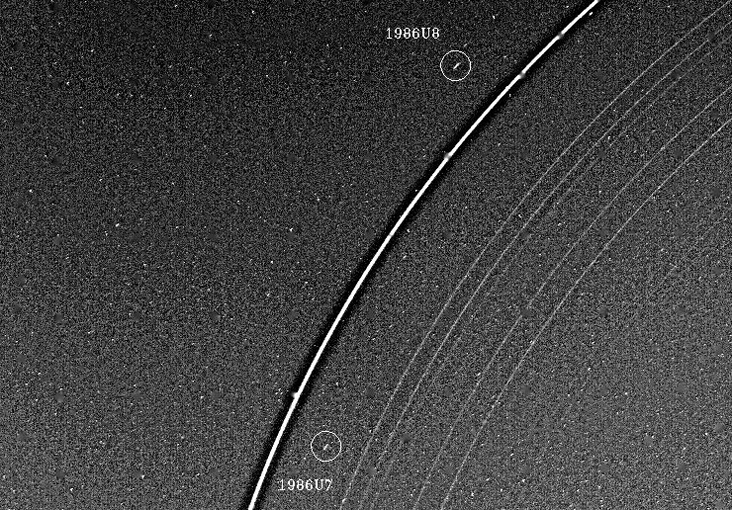Ophelia

Voyager 2 discovered two shepherd satellites―Ophelia (1986U8) and Cordelia (1986U7)―associated with the rings of Uranus. The image was taken 21 January 1986 at a distance of 4.1 million km (2.5 million miles) and at a resolution of about 36 km (22 mi).
NASA/JPL
Discovery
Ophelia was discovered in January 1986 in images sent back by the Voyager 2 spacecraft during its flyby of Uranus.
Overview
Ophelia is one of the small inner moons of Uranus. Ophelia appears to be the outer satellite straddling Uranus' bright Epsilon ring. Ophelia and Cordelia are believed to herd the ring material into shape and keep it from drifting into space. All of Uranus' inner moons (those observed by Voyager 2) appear to be roughly half water ice and half rock.
How Ophelia Got its Name
This moon was originally designated S/1986 U8, but was later renamed for the character of Ophelia in Shakespeare's "Hamlet." Ophelia is the daughter of Polonius and fiance of Hamlet in the play.
Keep Exploring




